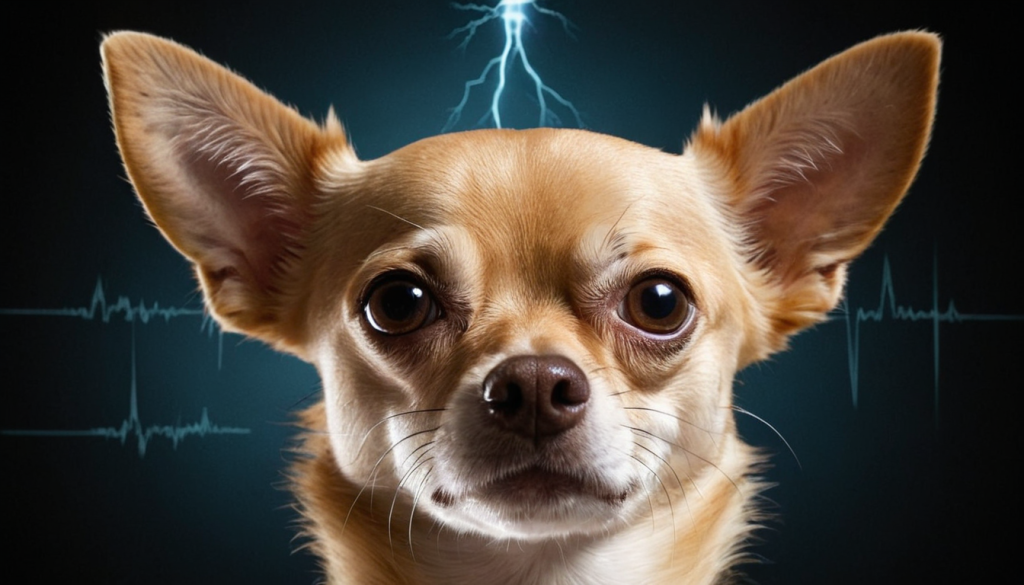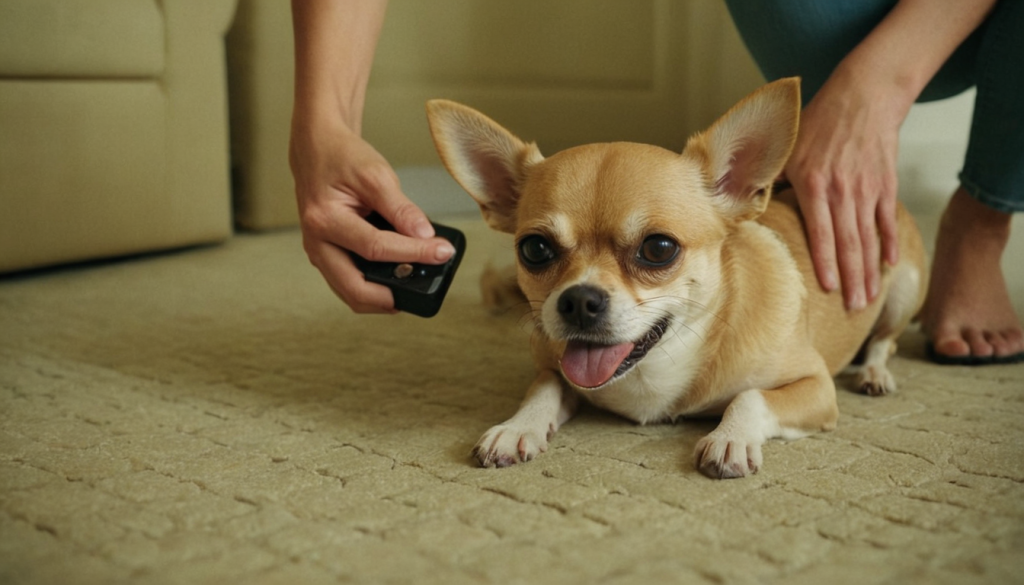Chihuahua Seizures: What Every Owner Needs to Know
Table of Contents
- What Are Seizures in Chihuahuas?
- Common Causes of Seizures in Chihuahuas
- Recognizing Seizure Symptoms
- What to Do During a Seizure
- Diagnosis: What to Expect at the Vet
- Treatment Options for Chihuahua Seizures
- Natural Remedies & Supportive Care
- Living with a Chihuahua Who Has Seizures
- Infographic: Chihuahua Seizure Checklist
- Final Thoughts & Ongoing Support

1. What Are Seizures in Chihuahuas?
Seizures are sudden, uncontrolled electrical disturbances in the brain. In Chihuahuas, they can look dramatic and scary—but not all seizures are life-threatening. The key is early detection and management.
2. Common Causes of Seizures in Chihuahuas
Chihuahuas are particularly susceptible to a few common causes:
- Idiopathic Epilepsy (most common cause in young dogs)
- Hypoglycemia (low blood sugar, especially in puppies)
- Liver Shunt (common in small breeds)
- Toxins (chocolate, xylitol, medications)
- Infections (such as canine distemper)
- Head trauma or injury
- Brain tumors (in older dogs)

3. Recognizing Seizure Symptoms
Chihuahuas may show different symptoms depending on the type of seizure:
Before the seizure (Aura Phase):
- Pacing or restlessness
- Whining or hiding
- Clingy behavior
During the seizure (Ictal Phase):
- Muscle twitching or convulsions
- Drooling or foaming at the mouth
- Loss of consciousness
- Stiffness or paddling of legs
After the seizure (Postictal Phase):
- Disorientation
- Temporary blindness
- Fatigue or confusion

4. What to Do During a Seizure
Remain calm. Your Chihuahua needs you to be their rock.
✅ Steps to Take:
- Move your pup away from stairs or sharp edges
- Do not put anything in their mouth
- Time the seizure—if it lasts more than 5 minutes, seek emergency help
- Speak softly to soothe them
📞 Call your vet immediately if:
- It’s their first seizure
- The seizure lasts longer than 5 minutes
- Seizures cluster (multiple in a short time)

5. Diagnosis: What to Expect at the Vet
To diagnose seizure disorders, your vet may recommend:
- Blood tests (to rule out metabolic issues)
- MRI or CT scan (to look for brain abnormalities)
- Urinalysis and bile acid tests (for liver function)
Expect your vet to ask about your Chihuahua’s diet, environment, and any known toxins.
6. Treatment Options for Chihuahua Seizures
There is no one-size-fits-all treatment, but options include:
🧪 Prescription medications:
- Phenobarbital
- Potassium bromide
- Levetiracetam (Keppra)
- Zonisamide
⚖️ Monitoring is key—your vet will likely want to check blood levels regularly.

7. Natural Remedies & Supportive Care
While traditional medication is often needed, some owners explore natural methods:
🌿 Natural Support Options:
- CBD oil (vet-approved only!)
- Diet adjustments (low glycemic, grain-free)
- Acupuncture or chiropractic care
- Regular exercise and stress reduction
🚫 Always consult your vet before using supplements.
8. Living with a Chihuahua Who Has Seizures
Life with a seizure-prone Chihuahua can still be joyful. Here are tips to improve their quality of life:
- Keep a seizure log (date, time, duration, behavior)
- Stick to a routine—consistency helps avoid triggers
- Make your home seizure-safe (baby gates, soft bedding)
- Build a support system with your vet and local pet community
9. 🧠 Infographic: Chihuahua Seizure Checklist
Visual Aid Suggestion: Add a clean, easy-to-read infographic that includes:
“Chihuahua Seizure First Aid Checklist”
- ✅ Time the seizure
- ✅ Keep your dog safe
- ✅ Avoid touching the mouth
- ✅ Keep calm & comfort after
- ✅ Contact your vet
“Common Triggers to Avoid”
- ⚠️ Sudden diet changes
- ⚠️ Missed meds
- ⚠️ Stressful environments
- ⚠️ Toxin exposure (plants, food)

10. Final Thoughts & Ongoing Support
Watching your Chihuahua have a seizure is heartbreaking—but with the right knowledge, care, and support, your little one can live a happy, healthy life. Stay informed, trust your instincts, and lean on your vet for guidance.






